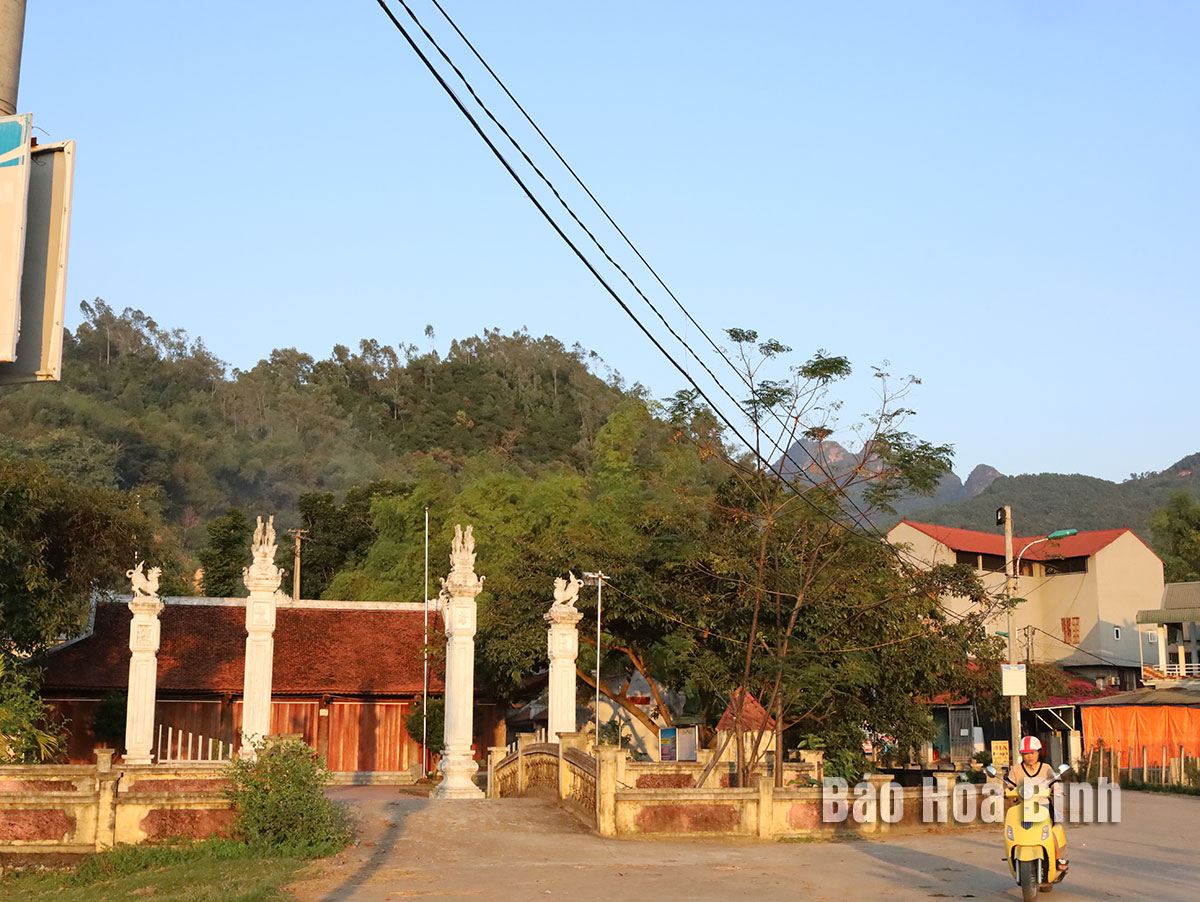Located on the right bank of the Da river in Quynh Lam ward, Hoa Binh city, the Ngoi communal house was recognised as a provincial-level historical and cultural relic in 1999. Upholding traditions, locals often come to the place on major festivals, full-moon days, and the first day of each lunar month, burning incense to honour deities and pray for favourable weather and good harvests.
Ngoi communal house in Quynh Lam ward has received investment for its preservation and renovation, promoting its historical and cultural significance.
Dedicated to the God of Mountain Tan Vien, also called Son Tinh, who governs all creatures on land, the communal house is situated on a spacious and flat area covering approximately 2,000 square meters. like many other relics, it has deteriorated over time and undergone several renovations. However, its architecture and sculptures have been preserved.
Along with the time, the altars inside were lost, so local people erected a new altar, which is elevated to a height of 2 meters, with incense burners and a container for ceremonial objects.
In recent years, efforts have been made to restore and protect the spiritual place. In 2017, the Ngoi communal house festival was organised on a city-wide scale to revive the ancient festival, preserving the traditional cultural value of the community.
According to Nguyen Thai Hoa, Director of the municipal Department of Culture and Information, every year, the locality emphasises its long-standing historical and cultural values by maintaining cultural and religious activities at the communal house. The Khai Ha (going down to the field) festival is regularly held from the 8th to the 10th day of the first lunar month, featuring religious ceremonies, offerings, processions, folk games, and folk singing and dancing. Other lunar-calendar festivals held in the area include the Mid-Autumn Festival on the 15th day of the 8th month as well as those honouring the God of Agriculture on the 5th day of the 6th month, and celebrating the new rice crop on the 15th day of the 10th month.
Not only a place to satisfy the spiritual needs of the local people, the communal house, with its proximity to famous tourist attractions such as the Hoa Binh hydropower plant, Tien Phi cave, and Thac Bo temple, is a draw to tourists, helping turn the city into a hub of tourism and cultural research.



